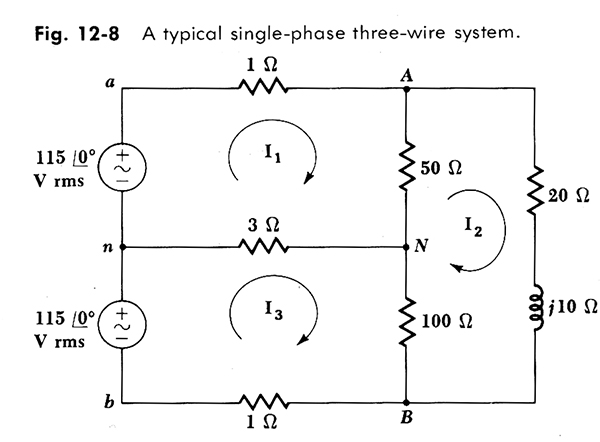winnie
Senior Member
- Location
- Springfield, MA, USA
- Occupation
- Electric motor research
Mivey,
I believe that what Rick is pointing out is that since current is defined as the charge moving past a point in a given amount of time, a current probe that is somehow connected to both the point under test and the neutral point is a strange thing.
Voltage is measured between two nodes; so you can pick the neutral as a reference and then measure the voltage at any other node. You are describing your current probe as if it worked in the same way as a voltage probe.
However I think I understand what you mean to say. When you place your current probe on the wire, or model the current flowing through the wire to solve an example, there are two possible orientations or 'senses' that you can use. What you are saying is that the sense of the current measurement/value must match the sense of the voltage measurement/value that it is being associated with.
If you select your voltage reference such that the 'sense' of some of your voltage values is reversed, then to determine the power suppled or consumed at each component, you need to appropriately change the 'sense' of your current measurement.
If the voltage measurement is from N to A, then the sense of the current measurement must similarly point along the conductor from N to A, even though the current measurement itself is at a single point between N and A. If the voltage measurement is from A to N, then the sense of the current measurement must point from A to N, again at a single point between A and N.
Jon
I believe that what Rick is pointing out is that since current is defined as the charge moving past a point in a given amount of time, a current probe that is somehow connected to both the point under test and the neutral point is a strange thing.
Voltage is measured between two nodes; so you can pick the neutral as a reference and then measure the voltage at any other node. You are describing your current probe as if it worked in the same way as a voltage probe.
However I think I understand what you mean to say. When you place your current probe on the wire, or model the current flowing through the wire to solve an example, there are two possible orientations or 'senses' that you can use. What you are saying is that the sense of the current measurement/value must match the sense of the voltage measurement/value that it is being associated with.
If you select your voltage reference such that the 'sense' of some of your voltage values is reversed, then to determine the power suppled or consumed at each component, you need to appropriately change the 'sense' of your current measurement.
If the voltage measurement is from N to A, then the sense of the current measurement must similarly point along the conductor from N to A, even though the current measurement itself is at a single point between N and A. If the voltage measurement is from A to N, then the sense of the current measurement must point from A to N, again at a single point between A and N.
Jon


